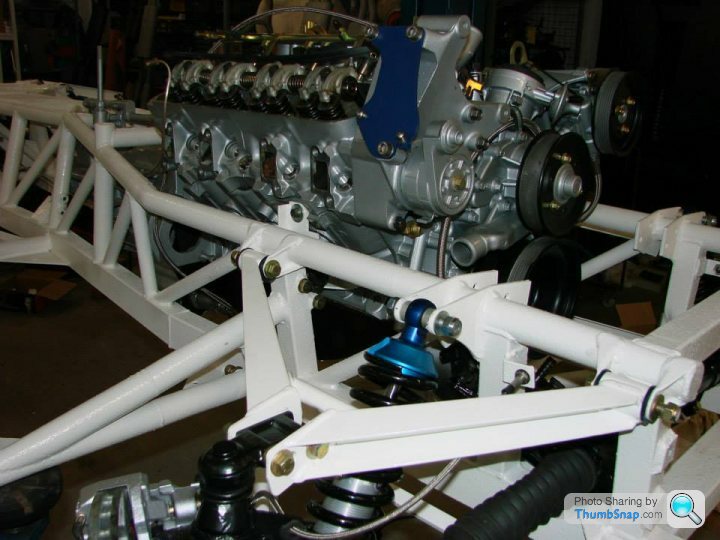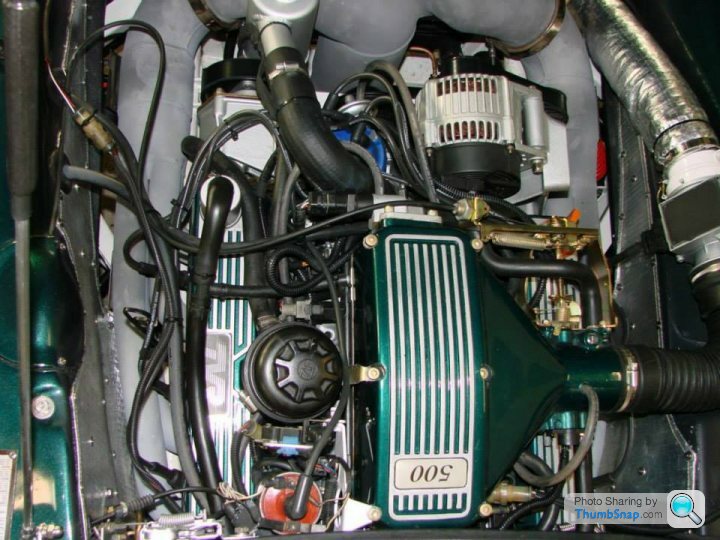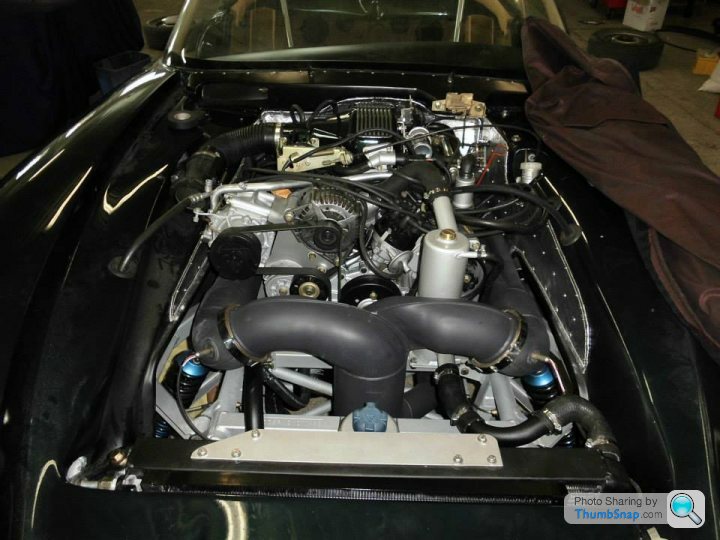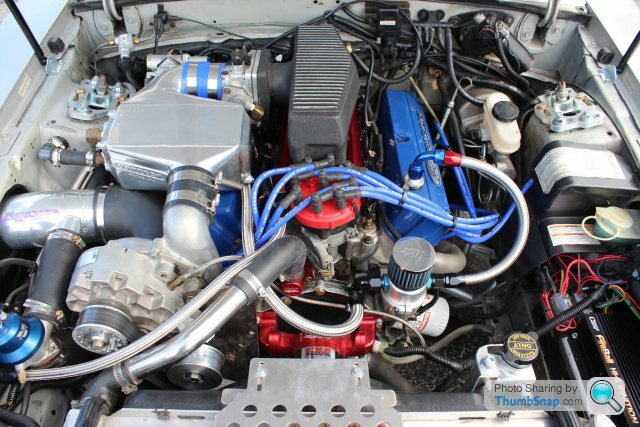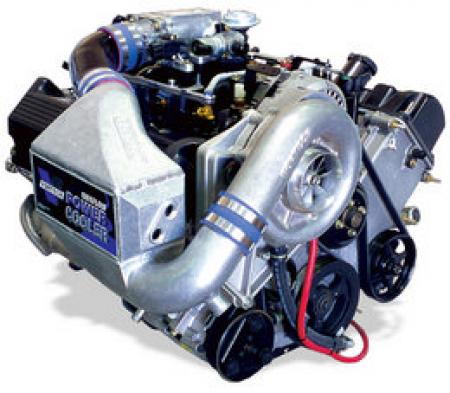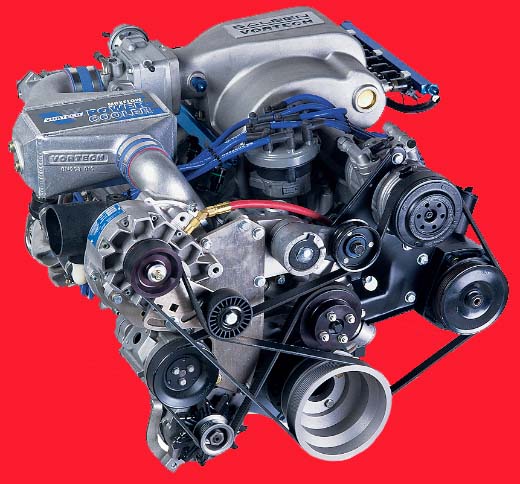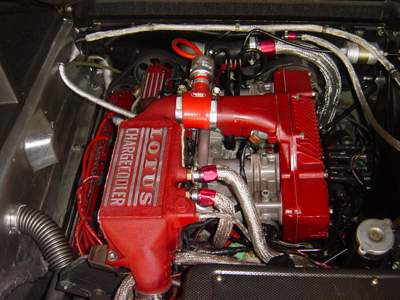"Gentlemen, show your engines!"
Discussion
SILICONEKID345HP said:
Because the car is left hand drive, that's how they made the left hookers.Remember, on a left hand drive car the brake master cylinder, servo, steering column, ect are all on the opposite side to a RHD car.
Look closely and you can see the clutch master cylinder in the left hand inner wing too.
ChimpOnGas said:
Because the car is left hand drive, that's how they made the left hookers.
Remember, on a left hand drive car the brake master cylinder, servo, steering column, ect are all on the opposite side to a RHD car.
Look closely and you can see the clutch master cylinder in the left hand inner wing too.
Does it have the throttle cable mod or is it just upside down ?Remember, on a left hand drive car the brake master cylinder, servo, steering column, ect are all on the opposite side to a RHD car.
Look closely and you can see the clutch master cylinder in the left hand inner wing too.
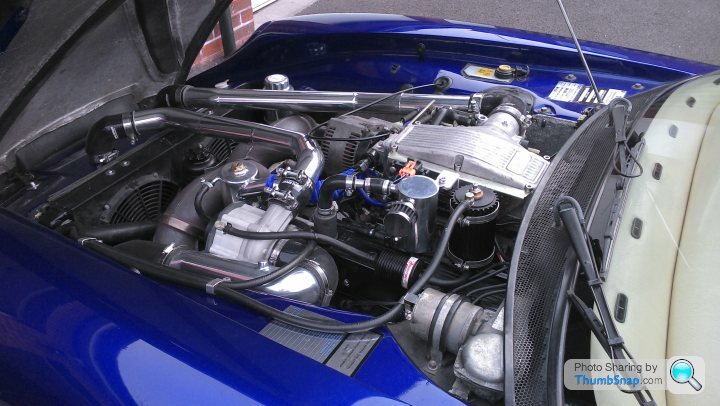
Some ugly SC pipes just for Dave…...

I made these to my design. Problem with the water / air cooler is that you end up with 2 heat exchangers, an air to water radiator in the front and then the water to air in the engine bay, this means that there are 2 sets of efficiency losses. I had this discussion with the guys in the Lotus Formula 1 HQ earlier this year while there on an invitation visit. They agreed that all the other teams doing better than them just had air to air intercoolers and that air water and water air coolers are only used when you can't fit air to air. You also have to remember that air water will need a pump to move the water around, another complication and another power loss….
Mr Supercharged said:

Some ugly SC pipes just for Dave…...

I made these to my design. Problem with the water / air cooler is that you end up with 2 heat exchangers, an air to water radiator in the front and then the water to air in the engine bay, this means that there are 2 sets of efficiency losses. I had this discussion with the guys in the Lotus Formula 1 HQ earlier this year while there on an invitation visit. They agreed that all the other teams doing better than them just had air to air intercoolers and that air water and water air coolers are only used when you can't fit air to air. You also have to remember that air water will need a pump to move the water around, another complication and another power loss….
During this short, intensive and punishing high speed session the power unit will see peak engine speeds of 18,000rpm, indeed the engine will spend 95% of the 90 minutes screaming above 15,000rpm. Throughout this madness the engine receives huge levels of boost that peak at a mind bending 50psi but seldom falls below 30psi, that means massive heat from the hot exhaust driven compressor.
A supercharged TVR exists in a very different world, it is expected to spend time sitting in traffic, crawling through town and stuck behind slow moving traffic on our crowded highways. Indeed the TVR's true average speed is likely to be well below 50mph, its low compression slow revving engine subjected to an absolute maximum of 10psi of boost and only for short periods.
Now all that's understood, if I was designing an system for removing heat from a turbo charged F1 car I'm pretty sure an air to air intercooler would be top of the list, however if I was designing something to do the same job on a supercharged road car an air to water charge cooler would likely be the favored option.
The point is when you design something you need to understand the application, and where the applications are so wildly different you are highly likely to choose very different solutions. If everything on an F1 car was good for a road car we'd all be driving around on slicks in vehicles that had 1mm of suspension travel & a 50 meter turning circle.
To design the best air cooling system for a road car we must first embrace & understand the specific demands placed on a road car not an F1 car. As such it's no surprise that in recent years (despite the additional cost involved) the vast majority of manufacturers producing supercharged cars have moved away from air to air in favor of air to water charge cooling.
The interesting thing is most of these cars are front engined, not mid engined designs where traditionally charge cooling was chosen because of the packaging constraints of placing an air to air intercooler in the air flow.
This trend is no accident, there are many sound engineering reasons behind the shift, the insistence car manufacturers place on their designers to create a product that delivers 150,000 miles of bullet proof reliability being just one. Jaguar, Ford, Chevrolet, BMW (Mini) and Range Rover are all using air to water charge cooling on their mass produced road cars equipped with supercharged engines, and for very good reason.
Sure it's more expensive than air to air intercooling, but it's delivers far more consistent air temperatures, and consistency equals predictable engine longevity & reliability.
In summary air to water charge cooling is infinitely more suited to a road car, just as air to air intercooling is infinitely more suited to that F1 car that is destined to spend just 90 minutes traveling at speeds approaching 200mph.
how about such system on the Rover engine?
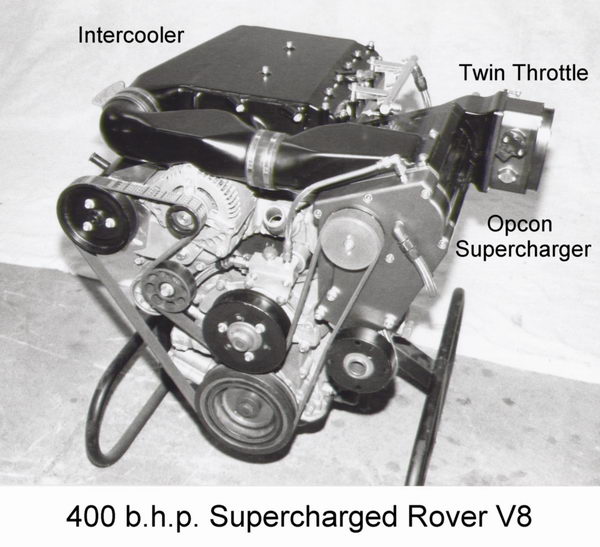
looks pretty compact and not much more needed?
http://www.jagweb.com/aj6eng/superchargers.php

looks pretty compact and not much more needed?
http://www.jagweb.com/aj6eng/superchargers.php

The intercooler vs charge cooler debate is not to say I don't care for your car Mr Supercharged.
Its very very nice indeed and I'd love to replicate it, with added gas

I especially like your 180 degree supercharger induction pipe work and the fact you proved you don't need that odd & expensive air box contraption, indeed it's likely I'll be seeking your kind permission to plagiarize this very feature

Your intercooler pipes are nicely executed too, it's just I quite like the idea of deleting them in favor of a charge cooler.
Horses for courses and all that

ChimpOnGas said:

The intercooler vs charge cooler debate is not to say I don't care for your car Mr Supercharged.
Its very very nice indeed and I'd love to replicate it, with added gas

I especially like your 180 degree supercharger induction pipe work and the fact you proved you don't need that odd & expensive air box contraption, indeed it's likely I'll be seeking your kind permission to plagiarize this very feature

Your intercooler pipes are nicely executed too, it's just I quite like the idea of deleting them in favor of a charge cooler.
Horses for courses and all that

 looks like its on MAP
looks like its on MAP 
I went the charge cooled route as I didn't want to chase the air around something like 9 feet or ducting when it could be got, reasonably cool and stable, into the plenum well inside less than a third of that. The potential for pressure drop off is lower, the charge temperatures are lower because the air does not have to be compressed as much to complete the circuit and water is ,frankly, a much more efficient conductor of heat than air (yes I know air ultimately cools the system but the capacity of the water volume to absorb and stabilise the transients typical on a street car is a bonus). On a turbo, perceived lag will be less and, also on a turbo, there are no parasitic power losses so the small electrical load of the pump is not really a consideration.
Sardonicu:Ds said:
o air box contraption because no air mass meter Dave  looks like its on MAP
looks like its on MAP 
Indeed Simon, in fact Mr Supercharged is on a Canems system like me  looks like its on MAP
looks like its on MAP 

I was talking to Lloyd Specialist Developments the other day about all this and they said the very same thing, it's felt the expensive air box contraption is only needed with the Lucas AFM.
I could probably make a good guess, but TBH I don't conclusively understand the science behind why the AFM needs it but a car equipped with a MAP sensor doesn't?
Can someone explain the reason in detail?
Is it all about speed of hot wire AFM response (or the lack there of) as you transition from closed to open throttle positions?
I'm genuinely intrigued

Pupp said:
I went the charge cooled route as I didn't want to chase the air around something like 9 feet or ducting when it could be got, reasonably cool and stable, into the plenum well inside less than a third of that. The potential for pressure drop off is lower, the charge temperatures are lower because the air does not have to be compressed as much to complete the circuit and water is ,frankly, a much more efficient conductor of heat than air (yes I know air ultimately cools the system but the capacity of the water volume to absorb and stabilise the transients typical on a street car is a bonus). On a turbo, perceived lag will be less and, also on a turbo, there are no parasitic power losses so the small electrical load of the pump is not really a consideration.
An excellent well considered list of rationals based on evidenced fact 
I'm with Pupp

And if its working well on a hot turbo installation, I can't see it being unduly taxed on a cooler engine driven centrifugal blower setup.
We do need to see some in & out temps from each system though to make a proper comparison, as the great man said "The answer my friend, is blowing in the wind"

I like this sort of system, oke its on a BMW V8 N62 series engine, but for example.
Its very compact and a short way for pressed air, all in one between the V and under the original sort cover.
would be nice to see such system on say the Rover engine, although you could make such from other cars parts
like from the Jaguar supercharger system or so?
I've seen them make a kit something like that for older BMW engines (M60-M62) but I guess with some changes also
for the Rover engines...?
http://www.esstuning.com/pages/x45%7B47%7Dx50-N62-...
.JPG)
_2.JPG)


Its very compact and a short way for pressed air, all in one between the V and under the original sort cover.
would be nice to see such system on say the Rover engine, although you could make such from other cars parts
like from the Jaguar supercharger system or so?
I've seen them make a kit something like that for older BMW engines (M60-M62) but I guess with some changes also
for the Rover engines...?
http://www.esstuning.com/pages/x45%7B47%7Dx50-N62-...


Gassing Station | Chimaera | Top of Page | What's New | My Stuff



